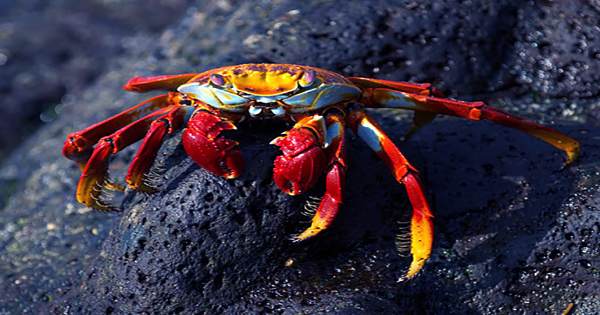Seat weeds erupt in nitrogen and phosphorus run-offs that can kill the coral wall off the offshore coast of dense Krishna. Many fish eat marine water, and corals have even been found to release chemicals that attract them in the face of threats posed by navy personnel. Unfortunately, the breeding efforts of piscean grazers rarely grow rapidly in this situation, especially after the removal of an unknown disease marine-urchin, another marine consumer. But Mark Butler, a professor at Florida International University, thinks the answer lies in managing crabs.
When one of the threats to coral walls overwhelms them, the location is usually overwhelmed by the beach and the recovery is many times harder. However, the crabs may move towards rescue, if we give them a little help.
Butler has seen the Caribbean king crab (Maguimithrax spinosissimus) not only eat a lot of marine swim in Florida keys but also have a type of marine seed in their diet that is toxic or digestible to other animals. On the other hand, M. spinosaurus is not a sufficient species to deal with marine sound outbreaks that are likely to threaten the habitat of young due to high adolescence.
Jason Spadero, a butler and PhD student in current biology, reported the success of an experiment to increase the number of crabs in heavily submerged reefs along the coast. With a single hand (or it should be a single claw) the crab dropped from 85 percent to less than half where the scuba divers removed the sea path before the crab was released, a year later the beach area decreased by 80 percent. In the control rods, where the number of crabs was low, the dominance of the marine style did not change.
Removal of seaweed would be somewhat responsive if the coral could not fill the void, but after two years the coral and fish were 2-5 times more abundant on the crab-rich rocks as a control. “When Jason showed me the results compiled from our first year tests, I can’t believe they look so good,” Butler said in a statement. “You should have noticed the look on Jason’s face when I said, ‘No one will believe these results. We need to repeat the test elsewhere for another year. ‘It’s not exactly what a grade student wants to hear when trying to finish! But we did it and the results were the same. “
Butler and Spadaro replaced crabs from other treatments instead of crab farming, so they think crab farming will work, they still don’t know for sure. If this makes it possible to encourage stocks, it will not soon be a moment for the walls of the region, most of which have shifted to marine style dominance. Butler notes that the barrier wall along the keys contains less than 2 percent of the original coral cover. Butler warned that if no action is taken to tackle climate change, some of the remaining fragments are unlikely to survive, but crabs could at least give them a chance to fight for their long-term survival if the world becomes more serious.
















